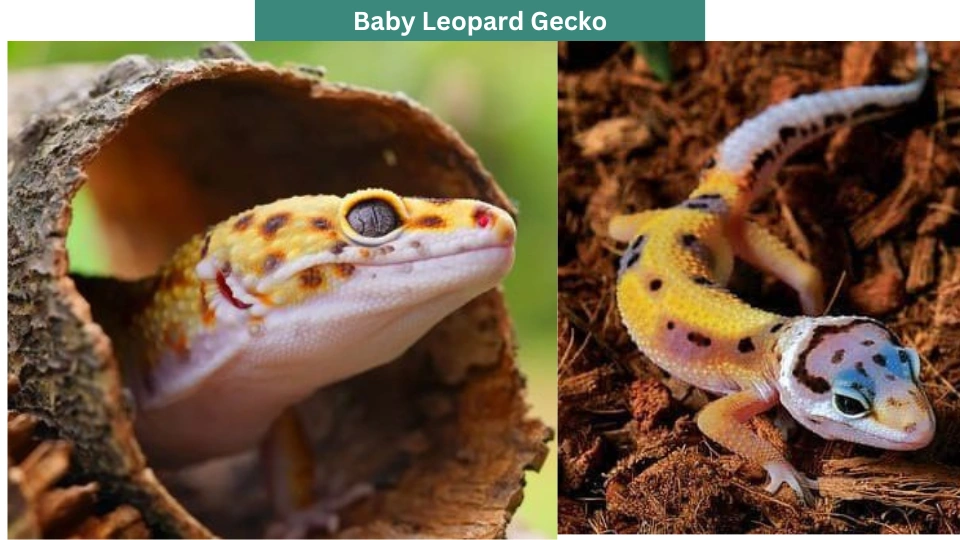Last Updated on March 14, 2024 by Aftab Tariq
Baby leopard geckos can inhabit a small plastic terrarium during their initial months to provide a less overwhelming space as they grow. However, it’s optional if you prefer them to transition directly into their permanent habitat. Dr. Fluffington says,
“Baby leopard geckos bring joy to every reptile enthusiast.”
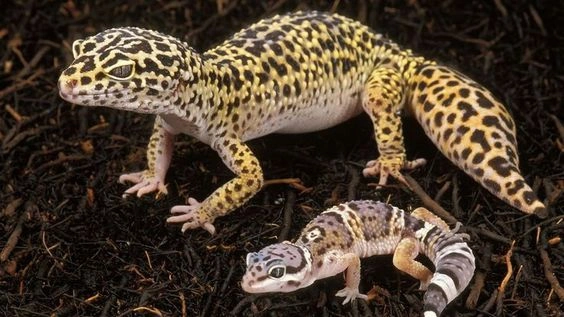
These small, colorful creatures are filled with curiosity and captivating reptile enthusiasts worldwide. With their charming demeanor and gentle nature, leopard geckos have won the hearts of many.
Adorned are striking patterns enabling them to blend seamlessly into their environment; these creatures are not just about looks but also brilliant and social. Prepare to be enamored by these captivating creatures as we delve into ten fascinating facts about baby leopard geckos.
Baby Leopard Gecko Hatching
Baby leopard geckos undergo an incubation period lasting around two months, though the exact duration, from 35 to 89 days, varies based on environmental temperature. During this time, the eggs are carefully nurtured until the hatchlings are ready to emerge.
Baby Leopard Gecko Care
For baby leopard geckos, provide 5-7 small crickets or mealworms daily until they reach approximately 4 inches in length. As they grow, start offering more extensive food every other day until they’re fully grown, typically within 10-12 months.
Once fully grown, adults can be fed 6-7 large crickets or mealworms 2 to 3 times per week. This feeding schedule ensures proper nutrition and growth for your leopard gecko throughout its life.
Baby Leopard Gecko Temperature
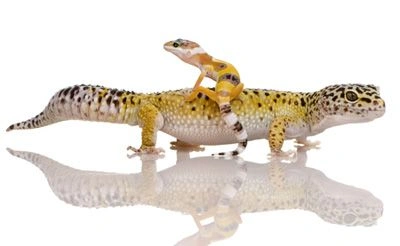
Leopard geckos, being semi-desert reptiles, prefer warm and arid environments. Optimal daytime temperatures for these geckos range from 75°F to 85°F (24-29 °C), with temperatures under the heat lamp reaching up to 90°F (32 °C).
Nighttime temperatures should always remain above 65°F (18°C). The ideal humidity level falls between 30% and 40%.
Baby Leopard Gecko Not Eating
There are various reasons why a baby leopard gecko might refuse to eat. Weather changes, reproductive cycles, food preferences, and adjustments to new habitats can all impact its eating habits. New leopard gecko owners commonly encounter this issue when introducing them to a new environment.
Facts About Baby Leopard Gecko
Here is the list of facts about Baby leopard gecko.
Baby Leopard Geckos Hatch Using Tiny Egg Teeth
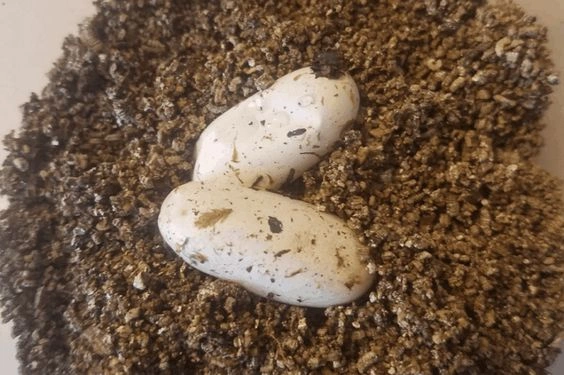
Baby leopard geckos are born with a unique tool called an “egg tooth” on their snout. This tiny tooth helps them crack open their eggshell when they’re ready to hatch. After they break free, the egg tooth falls off within a day or two.
These baby leopard geckos are small and only about 3 to 4 inches long when they hatch! It takes them around 12 to 18 months to grow into full-sized adults. Adult leopard geckos are 7 to 10 inches long and weigh 50 to 80 grams.
Baby Leopard Geckos Climb Without Sticky Toes
que because they don’t have sticky toes like others. Those geckos have tiny hairs on their toes that help them stick to walls. But baby leopard geckos have little claws instead. These claws work like small hooks that help them climb.
Leopard geckos usually stay on the ground, so they don’t need to climb trees or smooth rocks. But they can still climb textured surfaces like rocks and branches using their claws. Their claws also help them dig and make homes in the sand.
Temperature Determines Baby Leopard Gender
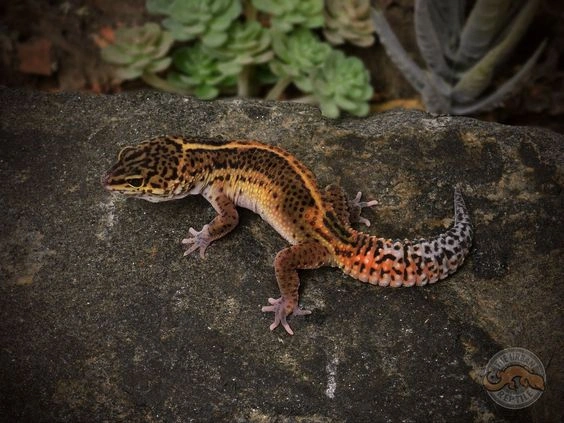
Baby leopard geckos have a different way of deciding if they’ll be boys or girls compared to many other animals. Instead of having particular chromosomes like XX for girls and XY for boys, they rely on something called temperature-dependent sex determination (TSD). It means the temperature around their eggs decides their gender.
There’s a gene called Dmrt1 that’s in charge of this. If the eggs are kept at cooler temperatures, the gene doesn’t activate, and the geckos become females. But if it’s warmer, the gene kicks in, and they become males.
Baby Leopard Geckos Can’t Eat Till They Shed
Baby leopard geckos need to rest a lot after they hatch from their eggs because it takes a lot of energy. For the first day of their life, they primarily rest until ready to shed their skin. It occurs within 24 hours after their birth.
During this time, they don’t eat anything because they are still getting nutrients from their yolk sac, like a bit of storage of nutrients. If they try to eat before absorbing all the nutrients from the yolk sac, they won’t get enough nourishment to grow properly.
Baby Leopard Geckos Make Excellent Pets
Baby leopard geckos have become trendy pets lately. They’re tough little creatures and are easier to care for than other reptiles. They only need a little space and primarily eat insects.
But they have specific needs, so learning about them is essential before getting one. You’ll need to set up the right home with a suitable habitat, food, and fun stuff for them to do. Also, remember that they live for quite a long time, like 10 to 20 years.
Baby leopard geckos have great personalities, and they’re not mean. With patience and care, you can help them get used to people and even enjoy being held. They can be so friendly that you can teach them to eat from your hand or hang out on your arm.
Baby Leopard Geckos Keep Fat In Their Tails
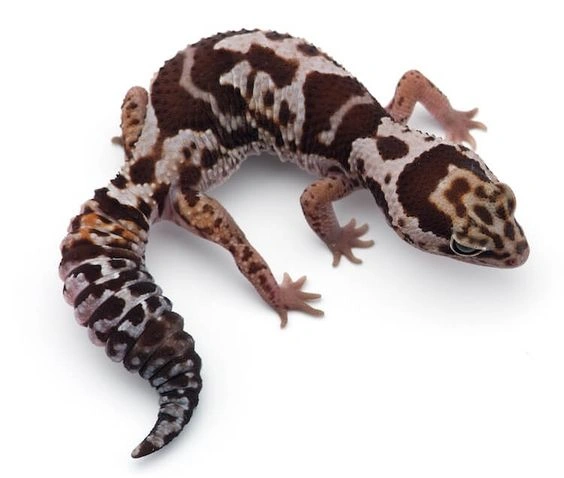
Baby leopard geckos have a neat trick: they store fat in their tails. It is similar to how camels use their humps for energy. These little geckos can tap into this reserve when food is scarce to keep going.
Look at its tail to check if a leopard gecko is eating well. If it’s thin and straight, the gecko might need more food. But if the tail is thicker than the gecko’s neck, it might overheat. So, their tails act like secret snack stashes, helping them stay healthy when food is hard to find.
Baby Geckos’ Appetites
As opportunistic predators, baby leopard geckos consume various insects and invertebrates. While adult leopard geckos should eat every other day to prevent health issues like obesity, their juvenile counterparts have different dietary needs.
Being small and rapidly growing, baby leopard geckos require daily feeding to acquire essential nutrients and energy.
However, due to their small size, baby leopard geckos must be cautious about the size of their food. Ingesting prey that is too large can result in impaction or choking.
Young leopard geckos must consume food no more significant than the space between their eyes. Typically, this means opting for smaller, softer crickets rather than larger, tougher insects like mealworms.
Baby Geckos Move And Make Cool Sounds
Baby leopard geckos show their feelings by moving and making sounds like humans do. They wiggle their tails when they hunt, making them seem like little reptile dogs getting ready to catch something.
This tail movement tells us they’re about to pounce on their prey. After eating, their tails go back to being relaxed.
Even though they’re not very talkative, baby leopard geckos can still make different sounds to express themselves.
They might chirp or squeak when they’re happy, click when uncomfortable or stressed, and even bark if they feel threatened. Sometimes, they might scream if they’re terrified, sounding like tiny dinosaurs.
Baby Leopard Geckos Regrow Tails
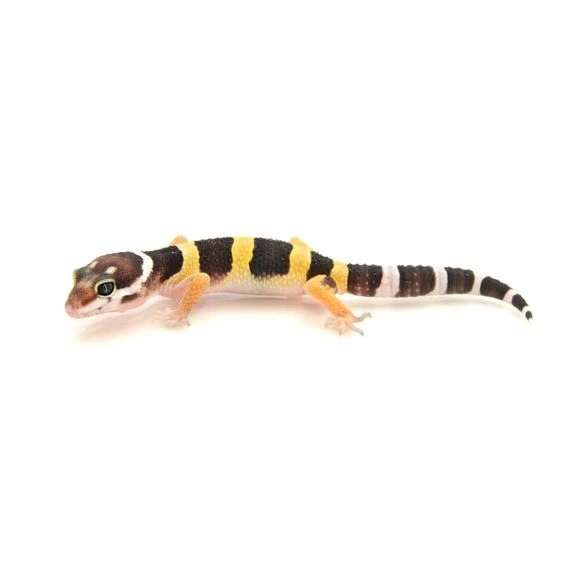
Another fascinating aspect of baby leopard geckos is their ability to intentionally detach their tails when sensing direct danger. This act, known as caudal autotomy, serves as a remarkable defense mechanism allowing them to sever their own tails under threat.
When faced with danger, leopard geckos experience rapid vasoconstriction, causing the blood vessels in their tails to narrow, thereby minimizing bleeding if detachment occurs.
The detached tail remains animated, twitching as if alive for up to 30 minutes, serving as a distraction that aids the gecko in escaping potential harm.
However, this defensive strategy comes with consequences. When baby leopard geckos shed their tails, they lose all the stored fat within them. Consequently, the loss of a tail is a highly stressful event for them.
Although they can regenerate a new tail, it never fully resembles the original, often appearing shorter, thicker, and smoother despite sharing similar colors.
Adolescent Leopard Geckos Occur In Nearly Every Hue
Leopard geckos are usually yellow in the wild, with black or dark brown spots that resemble a leopard’s pattern. On the other hand, thick color bands are present in newborn leopard geckos. When they develop and grow larger, these gradually turn into spots.
Leopard geckos’ coloring helps them blend well with their semi-arid and arid environments in Asia and the Middle East.
Breeders of leopard geckos in captivity utilize selective breeding to generate a range of color variants. Albino leopard geckos, for instance, are colorless, but melanocytic, black night and black pearl leopard geckos have almost all-black bodies.
Blizzard geckos with black eyes are solid yellow, white, or purple. Lavender leopard geckos are a wonderful light purple with spots or stripes, whereas tangerine leopard geckos have stunning brilliant orange tails.
Baby leopard gecko setup
Tank Size: Baby leopard gecko cute require an aquarium tank that is longer than it is tall since they are not arboreal. A 20-gallon tank is commonly recommended for adult geckos, providing ample floor space.
A 10-gallon tank is sufficient for hatchlings and juveniles, with plans for upgrading as they grow. Tanks with front openings or elongated designs like the 20-gallon-long aquarium are ideal.
Tank Cover: Ensure the gecko’s tank has a securely fastened mesh lid to prevent escape attempts. Front-opening enclosures designed for reptiles negate the need for a separate lid.
Lighting: Debate surrounds whether leopard geckos require UV/UVB light due to their crepuscular nature. However, low-intensity UVB lighting can provide warmth and simulate natural conditions. An honest day/night cycle can be established using a Smart Plug or a simple Christmas light timer.
Substrate: For hatchlings and juveniles, paper towel substrate is recommended for its affordability, ease of cleaning, and safety.
Heating: Leopard geckos rely on external heat sources due to being cold-blooded. A reptile heating pad beneath the tank provides the belly heat necessary for digestion.
Supplemental heat from ceramic heat emitters or heat lamps can create warm and cool zones within the tank. Heat rocks should be avoided due to the risk of burns.
Thermometer: Monitoring temperatures within the tank is crucial. Digital thermometers with probes can be placed at various locations to maintain proper temperature gradients.
Hide Boxes: Providing warm, calm, and moist hide boxes allows geckos to regulate their temperature and aid in shedding.
Water Dish: A shallow water dish with fresh water should be provided, ensuring easy access for the gecko while preventing feeder insects from drowning.
Furniture/Décor: Tank décor should prioritize hiding places, stimulation, and functionality without overcrowding the tank.
The Final Habitat: Ensure the tank maintains temperature gradients, humidity levels, and realistic décor to create a comfortable and stimulating environment for the leopard gecko.
Baby Leopard Gecko For Sale
Baby leopard geckos for sale are available on different online platforms. Most of them are 3-4 months old, but sometimes we also have adults, which are about 12 months old and can breed. Baby leopard gecko price is $149.95 – $499.00
Leopard geckos come from the Middle East and are used to dry hot places. But they also like having a damp hiding spot to stay calm and moist. They eat all kinds of insects, and we feed ours a mix of crickets and mealworms.
Sources
I am a dedicated content writer with more than five years of experience, particularly skilled in the art of storytelling. My writing journey commenced during my college years, where I pursued journalism and unearthed my talent for creating captivating narratives.

